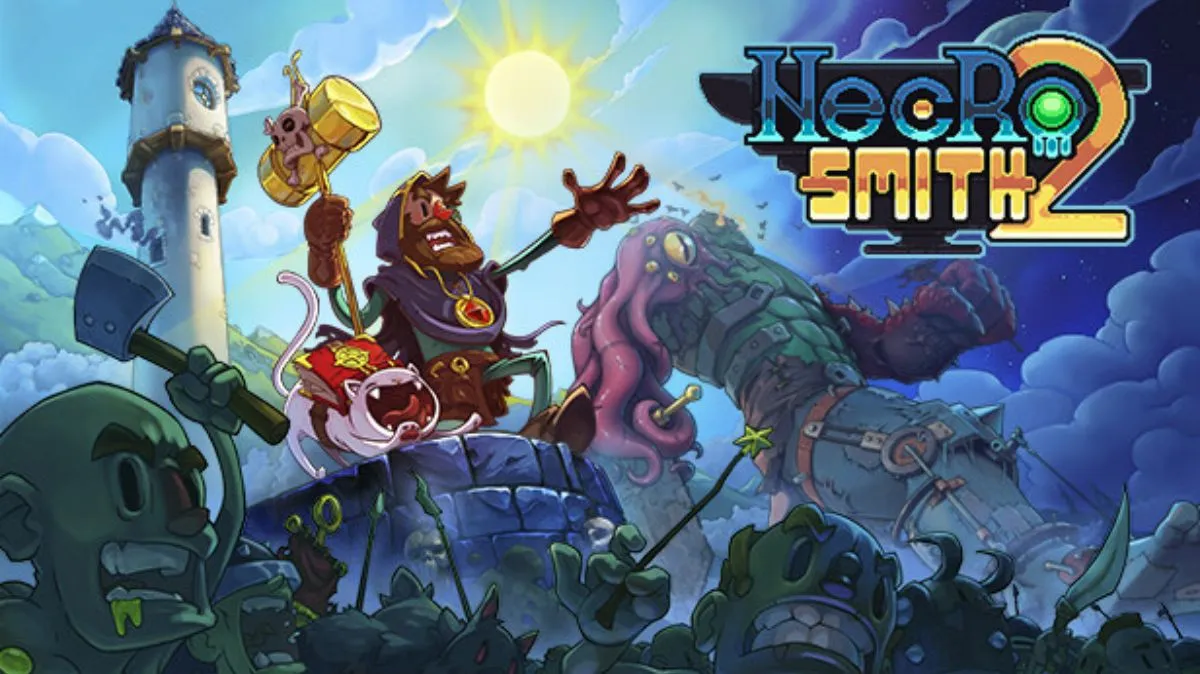
Developed by Introversion Software, the original Darwinia impressed upon the gaming world the idea that a game could look great and deliver unique gameplay without requiring a million-dollar production budget – Darwinia took up less space than a music file in some higher-profile titles. Its multiplayer adaptation Multiwinia: Survival of the Flattest is similarly modest, yet provides as idiosyncratic a real-time strategy experience as its big brother.
Where Darwinia has players rescuing tiny sentient programs – the titular Darwinians – from a marauding computer virus in an environment not unlike that of Tron, Multiwinia depicts the next unfortunate step in the Darwinians’ evolution – war. The Multiwinians as they are now called have separated into different colored tribes and set about ethnically cleansing their rivals in an unending war.
As in Darwinia, Multiwinia‘s gameplay revolves around the use of “officer” units. Right-clicking a Multiwinian promotes it, essentially converting it from citizen into waypoint. Officers direct nearby Multiwinians to these designated locations. Placing officers near spawn points helps muster the reinforcements critical to forming suitably overwhelming mobs. You can also use officers to organize groups of Multiwinians into rudimentary ranks not unlike the musket brigades of colonial-era armies. Ranked Multiwinians have greater range and are more effective at rushing turrets, but they’re also more vulnerable to area attacks such as grenades. Other than Multiwinia‘s use of formations and officers, there is no unit differentiation, alternative weaponry or upgrade system of any sort.
The main wild cards in a typical Multiwinia match are the periodic crate drops, which are scattered randomly across the battlefield . Crates contain a variety of special attacks or units. Rage temporarily triples the firing rate and damage of a selected group of soldiers (easily a tide-turner in a pitched battle), while gun turrets deny territory to the enemy. Ant colonies spawn tiny monsters that scatter formations and hamper movement, and harvester units gather up dead souls and deliver them to the nearest spawn point for resurrection. Crates on occasion also contain immediate benefits, like rockets or an instant batch of reinforcements.
The aptly-named Randomizer takes this element of chance even further by occasionally introducing crates with a temporary global effect, such as a “mega rage” that increases the damage output of all units or a “spawn mania” that briefly quintuples the output of every working spawn point. Some crates even trigger “crate mania,” which spawn dozens of crates everywhere. The randomizer helps impart Multiwinia with a hectic, unpredictable pace that belies the game’s otherwise simplistic mechanics.
Most of Multiwinia‘s game types center around spawn points, structures that, when manned by Multiwinians, periodically cough up groups of soldiers for you to organize and send into the meat grinder. Domination has players scrambling to control as many spawn points as possible, while King of the Hill pits tribes against each other to hold down a central territory. Blitzkrieg is a variation on the control-point style of the Battlefield series where Multiwinians jockey for position to capture point zones all over the map. Capture the Statue spawns a statue at a common location, which Multiwinians must fight to secure and drag back to a capture zone.

The most unique game modes, and the ones most suited to Multiwinia‘s inimitable style, are Rocket Riot and Assault. In Rocket Riot, players fight to man solar panels in a race to fuel their team’s giant rocket. The action constantly shifts back and forth as factions shuffle forces to and from panel farms, struggling to prepare the craft for liftoff. Assault pits large waves of attackers against well-entrenched defenders with walls, turrets and chokepoints but few reinforcements. Kill counts range in the thousands as attacking forces throw their unending numbers against the defenders in an attempt to reach and destroy a WMD before the defenders can activate it.
Unsurprisingly (and wisely), Introversion has preserved the series’ charming design aesthetic. The Multiwinians themselves are little more than flat, two-dimensional sprites sliding about low-polygon, grid-covered islands and shooting tiny lasers at each other. Meanwhile, ships shaped like the aggressors in Space Invaders carry out bombing runs. Introversion has also incorporated subtle nods to their other strategy title, Defcon: Everyone Dies into Multiwinia, with nuclear strikes fired from the former’s submarine-shaped icons and the missiles’ trajectories traced by elegant dotted-line arcs.
Multiwinia‘s sound effects are particularly well-done. Laser beams come complete with “pew-pew” noises, and grenades explode with a strong bass rumble. Then there’s the Multiwinians’ tragic death screams. Crowds of tiny troops whimper and yell as they’re shot, blown up, set on fire and generally slaughtered. In some crucial ways, Multiwinia‘s sound design establishes a stronger emotional connection with the on-screen carnage than some gory AAA first-person shooters. Perhaps simplicity breeds empathy, but in any case I felt more guilty sending mobs of rudimentary sprites into the teeth of rapid-fire gun turrets than I ever have realistically gibbing an opponent’s face with a flak cannon.
Unfortunately, great visual design doesn’t cover up awkward gameplay. As in its predecessor, players control Multiwinia‘s camera with the shooter-style WASD key arrangement, while controlling altitude and rotation by mouse. This control scheme was fairly effective in Darwinia, but with the additional management the sequel requires, locking the mouse to the camera forces you to constantly fling your viewpoint back and forth between multiple fronts. Multiwinia also maintains Darwinia‘s brain-dead pathfinding, so officers are as much a necessity as a convenience. In short, Darwinia‘s interface simply can’t keep up with Multiwinia‘s pace.
The lack of traditional RTS features like drag-box selection, focus-fire and group hotkey assignments also makes running a larger engagement an exercise in frantic movement and crude mob-rush tactics. Matches without a time limit can quickly bog down into bloody stalemates, as territories are often separated by solitary bridges turned mass graveyards. (Multiwinians can’t swim.) Even game-altering crates like nuclear strikes can’t always clear a bridgehead long enough for one side to gain the upper hand.
Bottom line: At the expense of Multiwinia‘s long-term viability as an RTS game, Introversion has given fans exactly what they wanted: a multiplayer version of Darwinia.
Verdict: Buy it. Multiwinia is dirt cheap, looks great, oozes character and is a riot to play for as long as it lasts.



